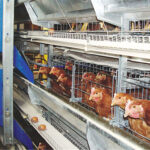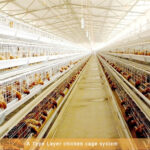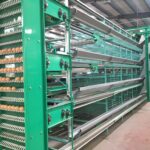Ventilation of common chicken houses using layer cages
In the farm, the house needs ventilation throughout the year. The chicken house needs ventilation in any season to ensure the fresh air in the house and ensure the healthy growth of the flock. Poor ventilation can affect the performance of the birds and the air quality of the house. The authors share a common way of ventilating chicken houses that use chicken battery cage system.
1. Minimum ventilation: Conditions of use: Suitable for cold seasons and young flocks.
Purpose: In the case of ensuring the temperature of the house, fresh air is sent to the house, the bad air in the house is discharged, and the excess moisture and harmful gases in the house are effectively discharged. Mainly through the side wall of the fan.
Control mode: fixed clock control, the number of open fans meets the ventilation every 8 minutes, the minimum operation time is 20%, and the clock is controlled.

Conditions to consider: Seal all seams and seal the gaps in the house as much as possible. Air exchange is based on ventilation, correct negative pressure, and correct wind speed at the air inlet. The direction of the air inlet reaches the ridge and avoids obstacles. The wind deflector can be used. The correct timer program is calculated in the size of the house. Time (%) of fan operation = total ventilation requirement / ventilation of the fan used.
The calculated ratio of fan operating time is multiplied by the fixed clock cycle time of the fan operation to obtain the time that each fixed-cycle fan should run.
2. Transition ventilation: Conditions of use: Applicable when the target temperature and the external ambient temperature are within 6 °C, and the ventilation requirement exceeds the minimum ventilation. Above 6 °C, the transitional ventilation does not function as a cooling. Below 6 ° C, the transitional ventilation will cool the flock.
Purpose: The minimum ventilation cannot meet the heat dissipation requirements of the house, and it is necessary to produce a low air-cooling effect at a low wind speed at the back of the chicken.
Control mode: Temperature controller control.
There must be enough side dampers to meet the exhaust air volume of at least three longitudinal fans. The dampers are evenly distributed from the one end to the other end of the house on both sides of the house, controlled by counterweight or negative pressure. The wind speed is equal to 1/4 of the longitudinal fan.
The above is the common ventilation method for the house. Today’s large-scale farm business use more and more poultry farming equipment, and most of them can achieve automatic control of the environment. Farmers can properly ventilate according to their own conditions.










